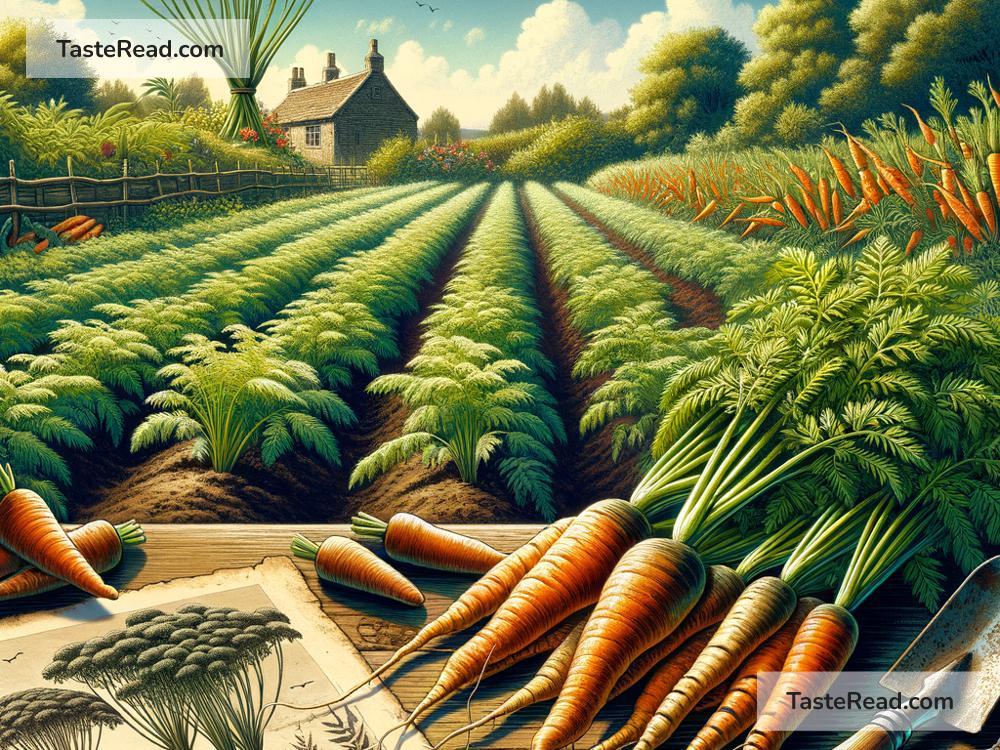The Curious Story of How Carrots Were Domesticated
Carrots may seem like an ordinary vegetable today, but their journey from wild roots to supermarket shelves is a fascinating and colorful story. Over thousands of years, this humble plant has evolved through human efforts, changing not only its appearance but also its importance in agriculture and cuisine. Let’s take a closer look at how carrots were domesticated and discover some surprising facts along the way.
A Wild Beginning
Carrots originally started out as wild plants known as Daucus carota, growing in areas like Central Asia, Persia (modern-day Iran and Afghanistan), and parts of Europe. These wild carrots were very different from the ones we know today. For starters, they were not orange—they were usually purple, white, yellow, or even black! The wild carrot roots were also small, thin, and often woody in texture, making them harder to eat. People likely first encountered these plants while foraging, using their roots sparingly for medicinal purposes rather than as food.
Wild carrots had a strong aroma, but they weren’t particularly tasty. Yet, early humans saw potential in them. Over time, they decided to cultivate carrots to improve their flavor, size, and appearance. This marked the beginning of carrot domestication—a slow process that took hundreds, even thousands, of years.
The Role of Early Farmers
Farmers in Persia and surrounding regions were likely the first to experiment with cultivating carrots around 1,000 years ago. They selected carrot plants with roots that were larger, sweeter, and easier to eat. By planting seeds from the “best” carrots season after season, they slowly improved the vegetable’s qualities. This process, called selective breeding, is how humans have improved many crops throughout history.
At this point, carrots mostly came in rich purple or pale yellow varieties. Orange carrots, the kind we eat most often today, didn’t exist yet. These early cultivated carrots weren’t just appreciated for their flavor but also for their usefulness in cooking and medicine. Some ancient texts describe carrots being used to treat ailments like stomach problems, and their seeds were sometimes used as spices.
Traveling Across Continents
Carrots didn’t stay in Persia forever. As trade routes like the Silk Road expanded, carrots began to travel around the world. By the 10th century, they were introduced to Europe, especially regions like Spain, where farmers embraced this new crop. Interestingly, the purple and yellow varieties of carrots became very popular there.
Carrots eventually made their way to Asia, Africa, and the Middle East, and with each journey to new regions, farmers continued to breed and refine them. During the Middle Ages in Europe, carrots became an important food crop as people realized they were relatively easy to grow and nutritious. Even though carrots at this time were still purple or yellow, they were becoming more varied and improving in quality.
The Birth of the Orange Carrot
The orange carrot as we know it today likely originated in the Netherlands in the 16th or 17th century. Dutch farmers were famous for their horticulture and worked to create sweeter, larger, and more appealing carrots. Interestingly, some believe the orange color was deliberately bred as a tribute to the House of Orange, the ruling family of the Netherlands at the time. Whether this story is true or not, what we do know is that orange carrots started to dominate the market because of their pleasant taste and vibrant appearance.
The Dutch orange carrot quickly spread around Europe and eventually the world, becoming the most common variety by the 18th century. This marked a major turning point in carrot history—orange became the standard color while purple and yellow varieties became less common.
Why Carrots Are So Popular
Carrots are now one of the most widely eaten vegetables in the world, and there are good reasons for their popularity. Firstly, they’re incredibly versatile. You can eat them raw, cooked, mashed, roasted, juiced—basically any way you can imagine. Secondly, they’re packed with nutrients, including vitamins A, K, and C. Vitamin A, which is essential for good eyesight, comes from beta-carotene, an orange pigment in carrots that gives them their signature color.
Over the years, carrots have become a symbol of health and simplicity. They’ve even made their way into popular culture as snacks for cartoon rabbits, like Bugs Bunny. But what many people don’t realize is the amazing story behind how they were domesticated.
A Rainbow of Carrots
Interestingly, while orange carrots are the most common today, scientists and farmers have worked to bring back the old carrot varieties. Purple, yellow, red, and even white carrots are becoming more popular, especially among people looking for unique and colorful ingredients. These rainbow carrots remind us of the vegetable’s rich history and diversity.
Conclusion
The story of carrots is one of patience and innovation. From small, tough roots growing in the wild to sweet, orange vegetables we love today, humans played a big role in transforming carrots into a staple of modern diets. Next time you crunch into a carrot, take a moment to appreciate the centuries of work that went into turning this root into the vibrant vegetable we know. This humble plant truly has a history worth celebrating!


